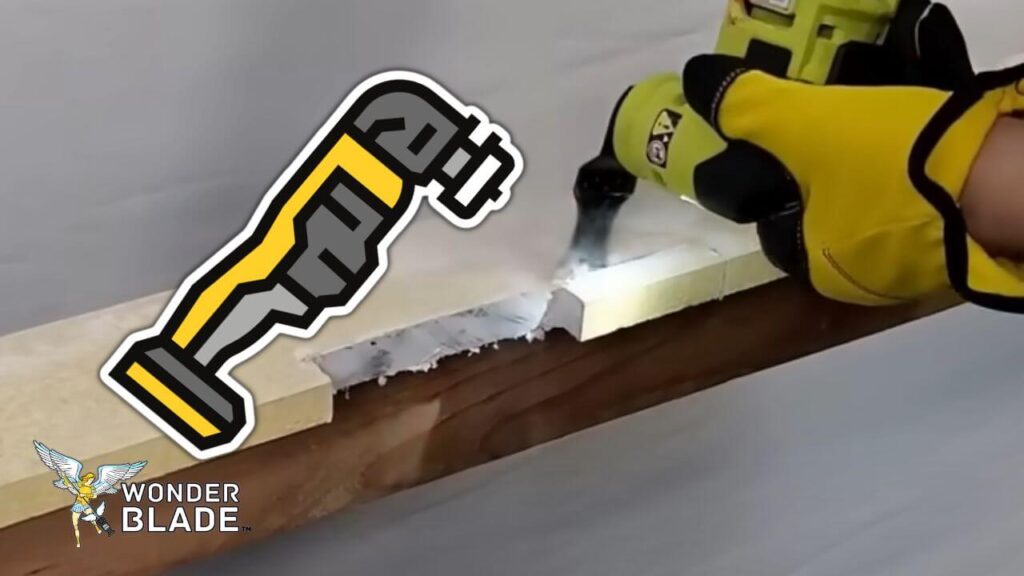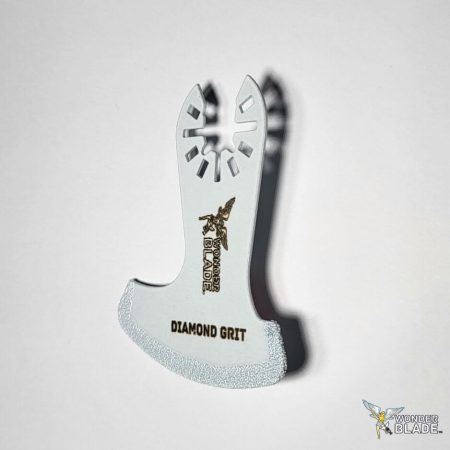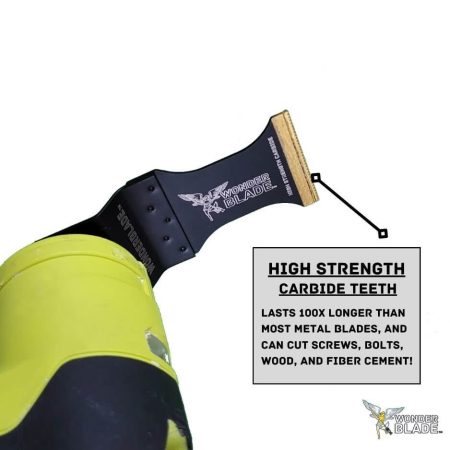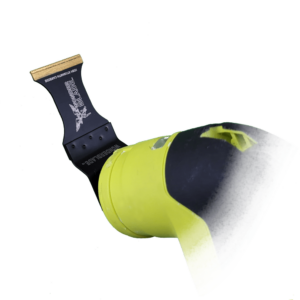
Oscillating multi tools are strong and versatile equipment. For those who are unfamiliar with oscillating multi tools or would want to learn more, the question of what can an oscillating multi tool do, may arise. The simple answer is A LOT.
Furthermore, oscillating multi tools are essential for any do-it-yourselfer or professional tradesperson since they can be used for anything from sawing through wood and metal to cleaning grout and sanding in tight spots. The following article will discuss the many uses and advantages of being an oscillating tool expert.
An oscillating multi-tool is a versatile electric equipment that may be used for many purposes. It can precisely cut, sand, grind, scrape, and polish various materials because of its specific back-and-forth action. The many uses for an oscillating multi-tool are explored in further detail here.
Cutting is a widespread use for an oscillating multi-tool. It is capable of slicing through many different materials. The depth and angle of the cut may be easily adjusted due to the tool’s oscillating action. Specific uses for cutting include as follows:
Sanding is another use for an oscillating multi-tool. Smooth rough surfaces and get rid of old paint or varnish using this instrument and its sanding attachment. It’s versatile enough to sand almost anything, from wood to metal to plastic. Specific sanding uses include the following:
Grinding operations, including polishing rough edges or eliminating extra material, are ideal for an oscillating multi tool. This is very helpful for metal and woodworking jobs.
Removal of old paint or adhesives from surfaces is only two examples of scraping jobs that may be accomplished using an oscillating multi tool. Using this method, you may safely remove outdated, ugly materials from a surface without causing any damage underneath.
Grout removal is another practical usage for an oscillating multi-tool. Grout can be readily sliced through by the tiny, vibrating blade, making removing old or broken grout from tiles easy.

*Save yourself time, money, and hassle with the best diamond oscillating tool blade in the industry for cutting through grout seamlessly!
When everything is said and done, an oscillating multi tool may be put to work for a broad range of additional purposes, including sanding, cutting, and even plunge cutting. An oscillating multi-tool is an excellent addition to any do-it-yourselfer’s toolbox if it comes with the appropriate attachments.
To sum up, an oscillating multi tool is a powerful and flexible device that can be used for many uses. An oscillating multi-tool is a must-have for any do-it-yourselfer or professional who has to grind, scrape, remove grout or take on any number of other tasks.
An oscillating multi-tool is a powerful device that may be used for several purposes. In addition to cutting, sanding, grinding, and scraping, this tool may also be used for various tasks requiring quick back-and-forth action. Oscillating multi-tools come in a variety of designs and power sources:
To function, oscillating multi-tools that are corded must be plugged into an electrical outlet. They can usually undertake more forceful tasks than their cordless equivalents. These devices are perfect for professionals who need to keep working for hours on end without having to worry about their batteries dying. In addition, they can do demanding tasks like slicing through thick materials.
Battery-operated oscillating multi-tools, often known as cordless multi-tools, are portable and straightforward to use. They run on rechargeable batteries, so you can take them everywhere without worrying about finding an outlet. Cordless oscillating multi-tools are great for occasional users that need a wide variety of instruments. However, they might not hold up under constant or prolonged use.
Pneumatic oscillating multi-tools use compressed air as their power source, thus the need for an air compressor. They can tackle the most demanding tasks and are often more effective than corded or cordless alternatives.
They find widespread use in jobs that need constant, rigorous effort. In comparison to its corded and cordless tools, pneumatic oscillating multi-tools are less popular yet more powerful and long-lasting.
In sum, anybody in need of a flexible and dependable instrument for a wide range of jobs would be well served by investing in an oscillating multi-tool. Whether you’re a skilled builder or like to tinker around the house, an oscillating multi-tool might be a lifesaver.
The availability of a large variety of blades and attachments is a major factor in their adaptability. The blades and attachments for oscillating multi-tools come in a wide variety of shapes, sizes, materials, and purposes,
Oscillating tools may be fitted with a wide variety of blades, each optimized for a particular task. Blades for oscillating tools often fall into one of many categories:

*Save yourself time, money, and hassle with the best oscillating tool blade in the industry that lasts many cuts through wood, screws, fiber cement, sheetrock, plastic, and more.*
If you want good results, you must use the correct blade or attachment for the job. Here are some things to think about while picking out a blade or attachment:
If you want your blades to keep cutting efficiently and for as long as possible, regular maintenance and replacement are musts. Some advice on how to care for and change your blades:
In a nutshell, oscillating multi-tools are adaptable devices that, with the right blade (find the best oscillating tool blades here) and accessory, can perform a variety of cutting, sanding, and scraping operations. Keeping your oscillating multi-tool in good working order and for as long as possible is as simple as picking the proper blade or attachment.
It is possible to do several tasks with the help of an oscillating multi-tool. To minimize injuries and maximize the tool’s effectiveness, users must observe proper safety procedures at all times.
You may complete your DIY tasks with an oscillating multi-tool in safety and efficiency if you follow the instructions and recommendations shown in this article.
The oscillating multi-tool is a popular power tool among both do-it-yourselfers and professionals because of its versatility. Its multipurpose design makes it a valuable asset to any workshop. Some of the numerous benefits of an oscillating multi-tool include:
Precision: These instruments provide accurate cutting and detailing in areas inaccessible by larger power tools.
Speed: Oscillating multi-tools save time and effort on construction projects because of their versatility and speed.
Reducing of Vibration: These instruments are simpler to use and less demanding on the user’s muscles since they emit less vibration than comparable power tools.
Accessibility: Oscillating multi-tools are convenient for home improvement and maintenance tasks because of their portability and versatility.
Attachment Capability: Many oscillating multi-tools come with additional attachments that can be switched out for different purposes.
Preventing Dust: In order to lessen the amount of dust and debris released into the air, several models either come equipped with their own dust collecting systems or may be connected to a vacuum.
When it comes to DIY projects or professional work, an oscillating multi-tool is an excellent investment because of its adaptability, precision, efficiency, user-friendliness, and low price.
The oscillating multi-tool is a powerful instrument that can be used for a wide range of jobs because of its adaptability and efficiency. Their precision and portability make them superior to standard power tools for a wide variety of tasks, including sanding, cutting, scraping, and grout removal.
Furthermore, oscillating multi-tools are great for both home improvement and industrial applications because to their adaptability, low vibration, and integrated dust collecting systems.
Here at WonderBlade™ we have the best high-quality oscillating tool blades, including diamond, and our General Purpose High-Strength oscillating tool blade. If you know how to use an oscillating tool properly, you can speed up your next job and make it seem like a professional did it.

There are many blades that you’ll find in your local hardware store tend not to last, here at WonderBlade we have an all around General Purpose Oscillating Tool Blade that lasts time and time again against hundreds of cuts through wood, fiber cement, sheetrock, plastic and more*
Submit your questions, thoughts, or concerns to help us make better content just for you: